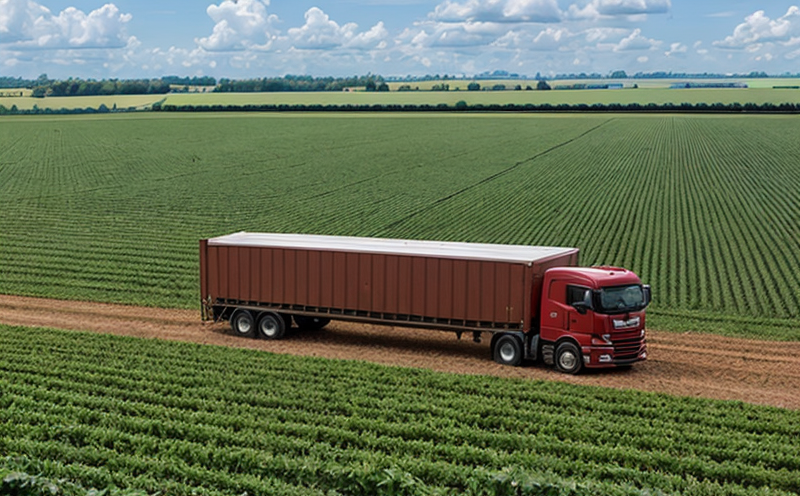Transit Shock Simulation for Fresh Produce
The transit shock simulation of fresh produce is a critical service provided by our laboratory. This testing ensures that agricultural goods are transported under optimal conditions, minimizing damage and maintaining quality during shipment.
Transporting fresh produce involves numerous challenges, including temperature variations, mechanical shocks, vibrations, and atmospheric changes. These factors can significantly impact the shelf life and overall quality of products. By simulating these transit conditions, we help our clients understand potential risks and develop strategies to mitigate them effectively.
The process begins with a comprehensive assessment of the produce's characteristics, such as size, shape, and fragility. This information is crucial for selecting appropriate test parameters that accurately reflect real-world scenarios. Our team then configures the testing equipment to replicate various transit conditions, including jolting, bumping, and vibration.
During the simulation, we closely monitor environmental factors like temperature and humidity to ensure they align with industry standards. This detailed monitoring allows us to identify critical points where improvements are needed. The data collected during these tests is meticulously analyzed to provide actionable insights for our clients.
Our laboratory adheres to recognized international standards such as ISO 17896, which sets guidelines for testing the mechanical properties of packaging materials used in food transport. Compliance with these standards ensures that our services meet global quality and safety requirements.
The results from transit shock simulations are invaluable tools for R&D engineers, procurement officers, and quality managers. They provide a clear picture of how different variables affect product integrity during transportation. This knowledge is instrumental in optimizing packaging designs and enhancing overall supply chain efficiency.
By leveraging our expertise and advanced testing equipment, we can help ensure that fresh produce arrives at its destination in optimal condition, thereby supporting sustainable agricultural practices and improving market competitiveness.
- Customer Impact: Enhanced product quality, reduced spoilage rates, improved customer satisfaction, and increased profitability.
- Sustainability: Minimized waste through optimized packaging design.
- Market Competitiveness: Improved delivery reliability leading to higher sales volumes.
Why It Matters
The importance of effective transit shock simulation cannot be overstated in the agricultural sector. Fresh produce, being highly perishable and sensitive to environmental changes, requires meticulous handling during transportation. Any mishandling or suboptimal conditions can lead to significant losses, both economically and environmentally.
For our clients involved in quality management and compliance, these tests are essential for ensuring regulatory adherence and meeting customer expectations. For R&D engineers, the insights gained from these simulations are crucial for innovation and process improvements. Procurement officers benefit from this service as it helps them select suppliers who meet rigorous quality standards.
The global nature of agricultural trade means that understanding local transportation conditions is vital. Our laboratory ensures that tests align with international best practices, thereby facilitating smoother cross-border transactions. By participating in transit shock simulations, clients can better position themselves to meet the demands of global markets while maintaining high ethical and environmental standards.
Applied Standards
The testing we perform is guided by several internationally recognized standards that form the backbone of our methodology:
- ISO 17896-1:2015 – Packaging for foodstuffs – Mechanical properties of packaging materials and their multiwall sacks used in transport and storage – Part 1: Determination of compression strength.
- ASTM D3786-14 – Standard test method for determining the resistance to puncture of flexible plastic packages.
- EN 2019:2015 – Packaging and packaging waste – Determination of durability in respect of mechanical strength.
- IEC 62368-1:2014 – Safety of information technology equipment – Part 1: Common requirements.
These standards provide a robust framework for our testing procedures, ensuring that results are reliable and universally applicable. Compliance with these standards is crucial for maintaining the integrity of agricultural goods throughout their supply chain journey.





